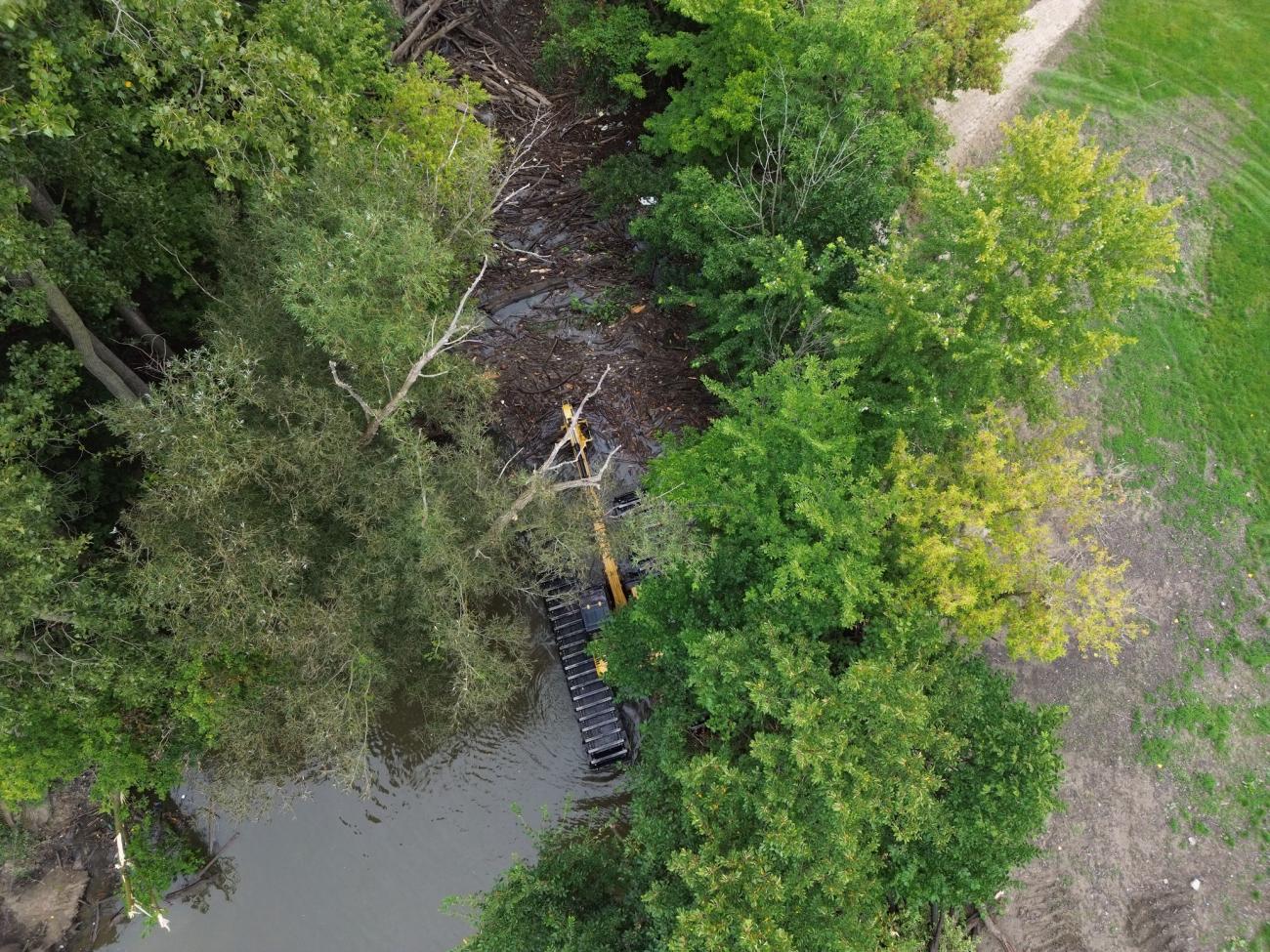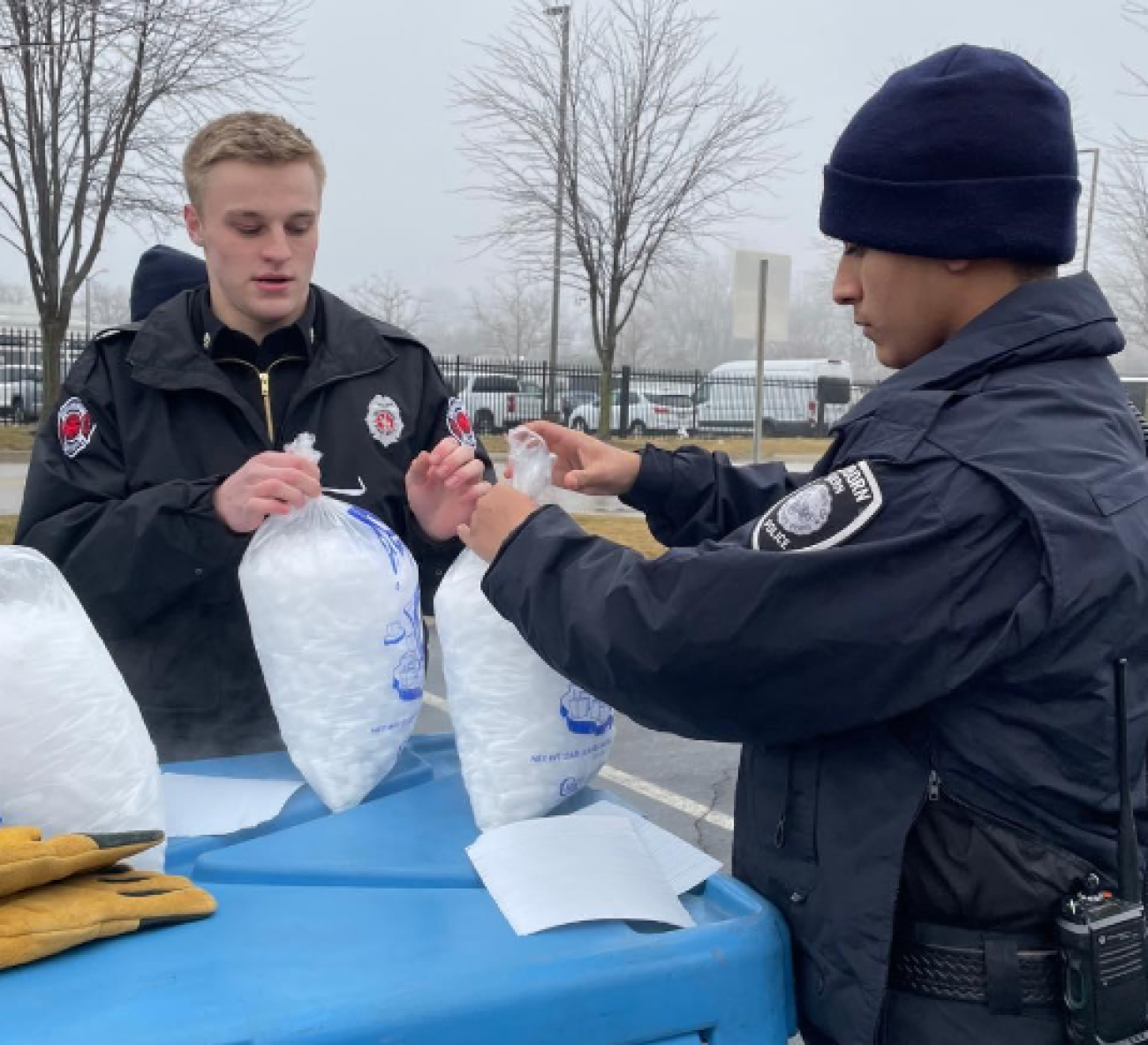
Flood Preparedness & Recovery
As human-induced climate change continues to warm the planet, scientists predict more frequent extreme weather events like heavy rains and flooding.
Dearborn’s sewer system was built to accommodate three inches of rainfall within 24 hours (the average monthly rainfall in Southeast Michigan is between three and four inches). However, individual storms dropped approximately 5.8 inches of rain in 2014 and 7.5 inches of rain in 2021, causing catastrophic floods.
To face this reality, the City is investing millions of dollars to expand stormwater capacity–but there are also steps you can take to mitigate flooding and react safely and effectively when it comes.
Flooding Projects Media Kit
Flood Preparation
Make a plan: Having a concrete emergency preparedness plan (including the specific needs of your household like children, pets, and medication) will help your family know what to do if disaster strikes.
Prepare an emergency kit: Emergency kits make sure you have the means to survive until help arises. Make sure you periodically check your emergency kit to replace expired items.

Flood Response
- • Know how to turn off electricity and gas lines if instructed to minimize damage to your property.
- • DO NOT walk, swim, or drive through flood waters. It takes six inches of water to knock a person down, and twelve inches to sweep and flood a vehicle away. Turn around, don’t drown.
- • Stay away from downed power lines and electric poles.
The Federal Emergency Management Administration (FEMA) recently streamlined its disaster assistance policies. Visit FEMA's website for more information about how to get help after disaster strikes.
Visit DisasterAssistance.govFlood Mitigation Tips
Improve home drainage: Blockages (from accumulated dirt, leaves, or other debris) in your home’s gutters and drains will prevent water from being efficiently channeled away from your roof. Blockages in sewer inlets can also prevent water flow, resulting in street flooding.
Rain barrels: Rain barrels help regulate the flow of water into the ground and sewers, mitigating flood potential. They also cut your water bill by capturing free rain water for use in landscaping and protect waterways from runoff.
Improve landscaping: Impervious surfaces (like pavement) limit the places that rain can soak into the ground. Replacing them with rain gardens or trees that catch and retain stormwater can help mitigate flood potential and improve your neighborhood’s value and aesthetics.
Seal your home: During a flood, water can seep into homes via cracks in the foundation and siding, causing leaks, basement floods, and other significant structure-damaging problems. To seal your home, apply weather protection sealant around basement and ground floor windows, doors, and walls. Seal small cracks in the foundation with caulking. Have large cracks (those approximately 1/4 inch or 6 millimeters wide) investigated by a structural engineer to find out if the home's foundation is solid or if more in-depth repairs are needed.
Install a sump pump: Sump pumps suck water out of a hole (called a sump) and move the water to another location. Sump pumps are typically installed in basements that have moisture problems. Battery-backup sump pumps are best because they continue to function even when the power goes out, which is common during severe storms. If you believe your basement or property could benefit from a sump pump, have a licensed contractor perform an evaluation of your property and install a sump pump in your basement if needed.
Prevent backflow: During times of flooding, sewers can fill and back up into homes. A check valve is a device that enables water and waste to flow in one direction through a pipe, but not in the opposite direction. Check valves to prevent this unwanted backflow from entering the home. If your sewers are susceptible to flooding during heavy rains, have a check valve installed by a professional plumber to ensure that it will work properly when the time comes.
Flood Zones
The Federal Emergency Management Agency (FEMA) determines the floodplain maps that lead to the requirement to purchase flood insurance and only FEMA can exempt property owners from purchasing flood insurance.
To determine if you are in or out of the flood zone, click the following link and enter your address.
If you believe your property was taken out of the flood zone by revalidation, check the following two documents for confirmation:
If your address appears on either document, you are NOT required to purchase flood insurance.
Flood Insurance Exemption
The Letter of Map Change (LOMC) is a process that allows property owners to be exempt from purchasing flood insurance even if their property appears within a FEMA floodplain. Submit a letter to Change Your Flood Zone.
Residents with questions about flood insurance requirements may contact FEMA at 1-877-336-2627 or visit FEMA.gov.
Disaster Recovery & Flood Preparedness
Following the historic flood in June 2021, the City of Dearborn’s Economic Development Department received approximately $27 million from the Department of Housing and Urban Development (HUD) for disaster recovery efforts. The Community Development Block Grant-Disaster Recovery (CDBG-DR) program was designed to help cities and states recover from presidentially declared disaster areas, particularly in low-income areas.
Dearborn has determined the best strategy to reduce and/or mitigate flooding would be to complete a large infrastructure project that will significantly increase the overall stormwater capacity during severe high rain events therefore, decreasing the amount of stormwater entering the stormwater lines which ultimately backs up into the sewer system.
The proposed infrastructure projects in collaboration with the other CDBG-DR mitigation projects will reduce the overall amount of stormwater runoff from entering the stormwater system when heavy rain and flooding events occur.
All projects will be located in the northeast and southeast sections of the city which were the most impacted and distressed flooding areas during the June 2021 flooding. These areas are also the City’s CDBG low-and-moderate income target areas.